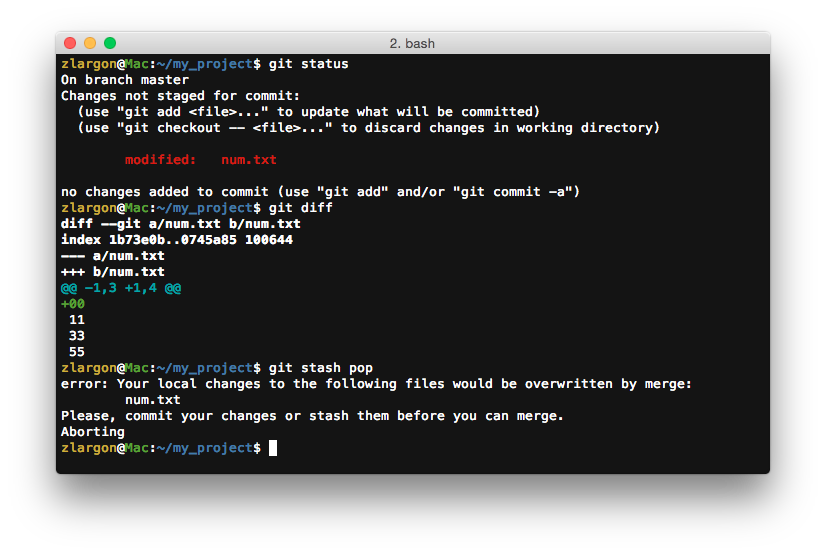

HEAD (stage 2 in the index) refers to the worktree state you had before running git stash pop.During a normal merge: "ours" is the current branch, "theirs" is the other branch being merged in.Īs with rebase conflicts, the yours-vs-theirs distinction can be a little confusing.During rebase: "ours" is the upstream branch, "theirs" is the topic branch.git checkout -ours - path/to/conflicting-fileĪgain, note that during rebasing the "ours"/"theirs" distinction is reversed: The easiest solution here is not to solve the merge conflict by hand, but rather take the master changes and then re-run the source formatting operation.
#GIT STASH POP MERGE CONFLICT CODE#
You rebase that topic branch onto master and get conflicts because somebody changed the code that you formatted. Say you have a topic branch and run a source formatter on it. This can be useful when dealing with conflicts due to things like formatting changes. Git ls-files -u shows the index metadata (paths, blob IDs) for all stages of unmerged paths.

Top shows upstream changes (AKA "ours").Bottom shows upstream changes (AKA "theirs").Summarizing " Understanding Git conflict markers", the "top" half of a conflict is the branch you’re merging into, and the "bottom" half of a conflict is the branch you are trying to merge, so: Normal merges Git status shows files with conflicts under "Unmerged paths".


 0 kommentar(er)
0 kommentar(er)
